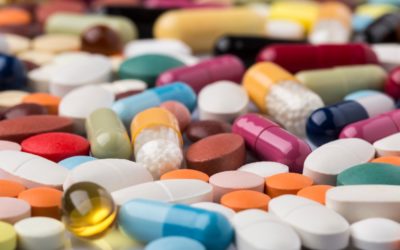Celiac, Autoimmunity and the Autoimmune Protocol
When I was first diagnosed with Celiac disease in 2011, my only instructions were to eliminate gluten from my diet. Since these instructions seemed pretty benign, I thought that I could get away with mostly cutting out gluten and only having small bites of gluten-containing foods on occasion (if the food was really worth it). As I continued feeling horrible, I realized that this wasn’t going to cut it. I had already lost 10-15 lbs without trying (due to my body not absorbing nutrients), I had neuropathy in my fingers and forearms due to malabsorption, I was constantly fatigued, in chronic pain, felt “foggy” all of the time and my stomach felt like I was being stabbed. Frustrated, and unsure what it really meant to have celiac, I began researching.
I learned the impact that gluten, even in very small amounts, has on the body of individuals with celiac. Having celiac means much more than just IBS symptoms. When people with celiac disease eat gluten (a protein found in wheat, rye and barley), it elicits an immune response in the body.
- This immune response triggers the body to attacks the small intestine.
- These attacks lead to damage on the villi, small fingerlike projections that line the small intestine, that promote nutrient absorption.
- When the villi get damaged, nutrients cannot be absorbed properly into the body.
- This is why I dropped weight without trying and why I was experiencing numbness in my forearms and hands.
- I was eating—more than I’ve eaten in my life.
- The problem was that my body wasn’t able to utilize any of the nutrients that I was consuming.
Convinced that gluten was not worth the consequences, I completely cut it out. This included going through lipgloss, shampoo, lotions, etc. and ditching anything with wheat starch, wheat protein, wheat/gluten anything! At first, I started to feel better. My neuropathy went away but my constant migraines, body pain, stomach pain and fatigue remained. I was angry. I was following the doctor’s orders to eliminate gluten, yet my symptoms had hardly budged. I continued to go to doctors, but the best help I could get was a diagnosis of “fibromyalgia” and a muscle relaxer. Leary of medications in general, I took ½ of the prescribed dose and went to bed. The next morning I was more than relaxed. I could barely move. I felt like I had been shot with a tranquilizing gun. What would have happened if I had taken the full dose? When I explained these symptoms to my doctor, unaffected, he told me to take ¼ of the dose instead of ½. No thank you. I threw away the medication and continued my research. He couldn’t tell me “why” I had “fibromyalgia” or what it meant. I needed answers.

Celiac Disease
I stumbled upon “Eat Right for Your Blood Type” by Dr. Dadamo at a friend’s house and she let me borrow it.
As an 0+, I discovered that many of my staple foods (oats, corn, eggs, greek yogurt, peanut butter, soy, and coffee) were not beneficial for my body. Animal proteins (which I didn’t love) supposedly were what my blood type needed. Honestly, I thought the book was bogus but what did I have to lose? I slowly (very VERY reluctantly) began to decrease my intake of these “avoid” foods and increase consumption of the “beneficial” foods. Believe or not, I started to feel better. I’m not saying that everyone should use this book, but it helped lead me towards health.
In addition to having better insight into the types of foods I should consume, I also wanted to know why. I looked to see if there was any link between gluten and the “avoid” foods. Sure enough, there is something called “cross reactivity.” This occurs when proteins in a particular food are very similar to the protein in gluten. Due to the similarity, those with celiac disease respond the same way that they do to gluten when they consume these cross-reactive foods. Some of these include coffee, dairy, corn, oats, and soy. These were the very foods that I had continued to eat while my symptoms barely budged.
As the years went on, I felt kind of like I was on a roller coaster. I’d see small improvements, only to be hit out of nowhere with the same symptoms. By process of elimination, I grew to understand that all nuts and seeds, nightshades (white potatoes, tomatoes, eggplant, and peppers), “gluten free” grains like sorghum and buckwheat, and sugar all caused problems. It got easier to eliminate foods but WHY WAS MY LIST OF FOODS GETTING INCREASINGLY SMALLER?
What I didn’t understand then, was the autoimmune component of celiac. There are many different types of autoimmune disorders. Some include lupus, multiple sclerosis, type I diabetes, hashimotos thyroiditis, psoriasis, and of course, celiac. So what is an autoimmune disorder?
I don’t recommend seeking answers to your medical questions on web-md, but they did provide a pretty good definition of what an autoimmune disorder is: “ Immune system disorders cause abnormally low activity or over activity of the immune system. In cases of immune system over activity, the body attacks and damages its own tissues (autoimmune diseases). Immune deficiency diseases decrease the body’s ability to fight invaders, causing vulnerability to infections.
In response to an unknown trigger, the immune system may begin producing antibodies that instead of fighting infections, attack the body’s own tissues. Treatment for autoimmune diseases generally focuses on reducing immune system activity.”
The “treatment” of reducing the immune system activity, in my case, was removing the foods that contained gluten and/or cross- reacted with it.
Why did I continue to develop intolerance to new foods? This article discusses the concept of “molecular mimicry.” In very basic terms, it means that certain food proteins have similar structures to proteins found in body tissues. In the case of autoimmunity, when your immune system determines that a certain protein (like gluten) is harmful, it attacks it. This can be a good thing. The problem arises when your own body tissues begin to get recognized by your immune system as gluten and your immune system attacks the tissues.
Certain foods tend to trigger an immune response more than others in those with autoimmune disorders. These include gluten, coffee, chocolate, sugar, gluten free grains (oats, quinoa, millet, amaranth, rice), beans/legumes, all dairy, nuts, seeds, nightshades and spices derived from nightshades or seeds (ex: cayenne pepper or mustard seed powder).
Though I had eliminated certain foods based on trial and error, I learned that elimination of such triggers is actually a method used to identify immune-modulating foods for autoimmune patients.
It is called “The Autoimmune Protocol” or “AIP.” In “The Autoimmune Solution,” Dr. Amy Myers gives an excellent explanation of the science behind the immune-reactions to foods and also provides a comprehensive way to implement the dietary changes. It begins with a 30-day exclusion of all of the possible sources of inflammation to give your body a reset. After the 30 days, you begin introducing one new food at a time, waiting 3 days in between. Many food reactions take a few days to manifest (delayed onset reactions), so you need to allow time to see if you react. Reactions span from fatigue to heart palpitations, headache to “foggy brain,” joint paint to IBS issues. If you don’t have a reaction to the trialed food, you can safely keep it in your diet and trial a new food.
During the elimination portion, there are still plenty of nutrient-dense foods that are not inflammatory and are safe to consume. These include all natural proteins (beef, lamb, chicken, turkey, wild game, tuna, salmon, halibut, shrimp, etc). If you can purchase grass-fed and organic, it is recommended because those protein sources have higher levels of beneficial omega-3 fatty acids. All vegetables (aside from nightshades) are free to consume in addition to healthy fat sources such as avocado, coconut oil and olive oil. Coconut milk is used as a dairy alternative and coconut flour, plantains, and sweet potatoes serve as starch sources. As with any healthy eating plan, it is recommended to focus on protein, with at least half of your plate non-starchy veggies, a small amount of healthy fat and about ½ cup of a starch depending of activity level. These “allowed” foods are full of vitamins and minerals and serve as “medicine” to the body.
Not everyone responds the same. I have used this protocol on myself (though I didn’t realize that I was doing it at the time) and now use it on my patients with autoimmune disorders. Some are able to re-introduce foods such as eggs, nuts and seeds without any problems. I can’t have those, but am perfectly fine with rice, quinoa and peppers. Knowing my “trigger” foods has helped me avoid uncomfortable flare-ups resulting in chronic pain. The purpose of the Autoimmune Protocol is to find sources of inflammation; it is not designed to be a fad diet, quick weight loss plan, or even a long-term elimination. If you don’t react negatively to a particular food, consume it, especially if it is nutritious.
When I was going through a lot of my “mystery” reactions, conventional medical doctors weren’t prepared to look at the whole picture and identify the root causes of why my body was responding the way it was. Now, there are more and more functional medical doctors, who understand how a body should function and dive deep to figure out what factors are causing the body dysfunction.
If you suffer from an autoimmune disorder or know someone who does, consider seeking the help of a Functional Medical doctor or a Functional Registered Dietitian.
Also, read to educate yourself! Here are some great resources to get you started:
The Autoimmune Solution by Dr. Amy Myers and her website
Listen to her podcasts with various health professionals to learn more.
Function Medical Doctor Mark Hyman and his website
Grain Brain by Dr. David Perlmutter and his website
Listen to the Autoimmune Wellness Podcast with Mickey Trescott and Angie Alt at
Read informative articles and get more detailed information about the Autoimmune Protocol for Dr. Sarah Ballantyne, PhD at her website
http://www.thepaleomom.com/the-autoimmune-protocol/
The more knowledge you have, the better advocate you can be for your own health!
http://www.amymyersmd.com/2013/04/10-signs-you-have-an-autoimmune-disease-and-how-to-reverse-it/
https://www.direct-ms.org/document-category/molecular-mimicry/











